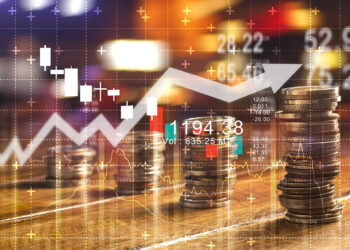According to Betashares’ latest ETF report, Australian investors significantly pivoted back towards international equities last month, with inflows more than doubling from $815 million in March to a significant $2.1 billion in April.
This was notably thanks to US President Donald Trump’s tariff reversal on 9 April. Namely, a week after the “Liberation Day” announcement, which saw global sharemarkets plunge, Trump suspended reciprocal tariffs exceeding 10 per cent for all countries except China, instituting a 90-day pause.
This triggered a renewed interest in risk-off assets, which translated to ETFs with nine of the top 10 ETF products, based on inflows in April, invested in equities.
Australian equities, alongside their international counterparts, also enjoyed a modest boost in inflows off the back of rising investor appetite. Inflows into the ETF asset class were up from $1 billion in March to $1.6 billion in April, Betashares’ data highlighted.
In a statement on Wednesday, local ETF provider Global X highlighted that based on its data, Australian investors are heavily investing in US and China-focused ETFs, leading to heightened inflows and returns since early April.
The firm attributed May gains to the larger-than-expected decrease in tariffs between the US and China on Monday – marking a potential end to the US-China trade war – which boosted the S&P 500 by more than 3 per cent over the past two days.
Namely, as announced on Monday, tariffs on US exports to China are down from 125 per cent to just 10 per cent, while tariffs on Chinese exports to the US are down from 145 per cent to 30 per cent.
This announcement triggered a return of sharemarkets with the S&P 500 up 0.31 per cent for the year-to-date at trading close on Tuesday, sitting at 5,886.55, up from a low of 4,982.77 on 8 April.
Meanwhile, surging tech stocks drove the Nasdaq Composite Index up by 5 per cent over the past two days, just weeks after it fell more than 20 per cent due to trade tensions.
The index was down 1.4 per cent year-to-date at 19,010.08 as of Tuesday, but gained nearly 25 per cent since 8 April’s low of 15,267.91, and is firmly back in bull territory.
“The latest market movements are likely to push Australian investors further into US and Chinese sharemarkets,” said Billy Leung, senior investment strategist at Global X.
“Having already been buying into the dip in April, now there are likely to be even more retail investors buying following the sharp rises in US markets overnight.”
US exceptionalism is back
While the US exceptionalism story has come under fire in recent months, Leung said investors’ renewed appetite for US equity ETFs has revitalised the narrative, simultaneously boosting confidence in China too.
“Strong inflows into US equity ETFs reflect continued confidence in the US exceptionalism narrative and sustained appetite for exposure to the world’s largest economy, and increasingly, the world’s second largest economy, China,” he said.
Recent tariff announcements from the US mark a sharp reversal after months of trade tensions and escalations, the senior investment strategist added, ultimately reducing the immediate risk of further escalation and triggering a broad-based stock market rally.
“This technical reversal is likely to broaden, particularly into areas that had lagged since April,” Leung said.
With this in mind, he predicts the Nasdaq Composite Index will strike a record 22,100 points by the end of the year, based on 15 per cent earnings growth, and 24-time forward price-earnings (P-E) ratio.
“This gives room for megacap US technology shares and China innovation equities to recover some ground. The market now has a cleaner base to from which to build and more momentum could come from Nvidia’s results at the end of May,” he said.
Although economists have broadly welcomed the US-China tariff truce, some are nervous the subsequent market reaction could embolden Trump to escalate tensions once more.
AMP’s chief economist, Shane Oliver, highlighted earlier this week that the lower, approximately 14 per cent average US tariff, was still nearly five times higher than it was earlier this year, warning that conditions could deteriorate again.
“The 10 per cent tariff on everyone looks like a firm baseline and things could still worsen again if progress is not made between the US and other countries in the 90-day negotiation periods,” he told InvestorDaily.
“In fact, the surge in sharemarkets adds to the risk that Trump might feel emboldened to ramp up the pressure again. Against this backdrop, companies will still be uncertain,” Oliver said.
Ultimately, while the chief economist acknowledged the worst-case scenario has been removed, with the risk of US recession falling, he noted that global and Australian growth is still likely to weaken.
“And it will likely remain volatile in investment markets for a while yet,” Oliver said.






